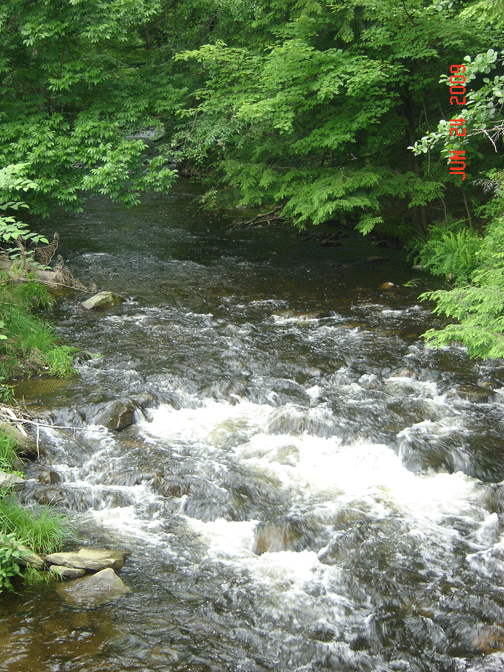During the winter, large quantities of lumber from the Halfway Brook mills were drawn to Barryville, made into rafts, then taken to Handsome Eddy, two or three miles further down the river. There they waited for the spring freshets.
At Handsome Eddy, considered a safe place for rafts no matter what the water level, the rafts were combined into larger rafts—a double raft made of two single rafts lashed together, which was the usual, or a six-handed raft made of three rafts. The completed rafts were anchored and lashed together before they were launched into the Delaware River.
In early spring 1832, at least 2,000,000 feet, and 20 to 25 double rafts of sawn lumber sat at Handsome Eddy, ready to float to market. The water level of the river remained low through the first week of May, which was unusual. Owners were anxious to get their rafts to market; the raftmen were uneasy about doing so in such low water. What to do?
Starting May 8, 1832, it rained violently day and night for three days and nights. The Delaware River, a raging flood, was covered with the valuable lumber and rafts which had been anchored in Handsome Eddy. Only David Quick’s raft was saved because it was in a favorable position.
The “May flood,” was the highest known until the flood of 1869 and one in 1895, which was 16 inches higher.
—Johnston’s Reminiscences, p. 276
Halfway Brook as it leaves Eldred. Photo courtesy of my cousin Cynthia.








